Early honey plant Siberian kandyk

Siberian Kandyk (Eritronium sibiricum Fisch.&C.A.Mey) Krylov. - belongs to the lily family, which includes the most beautiful plants of our flora, such as: lily of the valley, lilies, kupena, tulips and many others.
The Russian name comes from the Turkic word kandyk - dog tooth, because the elongated bulb is shaped a little like a dog’s fang.
Content
- Geographical range and ecology
- Botanical features
- Healing properties of kandyk honey
- Growing in culture
- Economic use
Geographical range and ecology
This plant is endemic to Southern Siberia, a relic of the Tertiary period that survived the glaciation era. In addition to Siberia, Siberian kandyk can be found in the mountains of Central Asia, Mongolia and Northern China.
Its most numerous populations were found west of the Yenisei, in Khakassia, Novosibirsk, Tomsk and Kemerovo regions, and in Altai.
Like most of its relatives in Europe and North America, the Siberian kandyk prefers light deciduous forests of the alpine belt; in the highlands it reaches the belt of snowfields and alpine meadows. In dark coniferous forests it prefers to grow in open clearings and edges.
Botanical features
- Plant height is from 15 to 30 cm, the bulb is narrow-conical, 4-8 cm high and 1 cm in diameter.
- Leaves with short petioles, opposite, lanceolate - 8-15 cm long, have a spotted pattern.
- Flowers are solitary, tepals (petals) - 6, up to 8 cm long.
- The fruit is a triangular capsule, the seeds are large and few in number.
- Kandyk is a typical ephemeroid - after flowering, the above-ground part of the plant dies.
- Flowering begins immediately after the snow melts, in mid-April and lasts two to three weeks.
A continuous carpet of dark pink, similar to cyclamen, blooming kandyks - an unforgettable sight.
Healing properties of kandyk honey
Due to its incomparable properties, Siberian kandyk honey is considered the rarest variety.
His abilities:
- cleanses the liver and bile ducts, while being able to remove both toxic substances and medications;
- strengthens the immune system;
- has strengthening and rejuvenating effects;
- normalizes the functioning of the nervous system;
- helps improve lactation in nursing mothers;
- improves the functioning of the pancreas.
Growing in culture
Siberian kandyk is very promising as an ornamental garden plant. It is distinguished by frost resistance and unpretentiousness. Prefers moist, loose, peaty soils with a slightly acidic reaction. Unlike the North American and Southern European species of kandyk and their varieties common in gardens, Siberian kandyk does not require shelter for the winter.
In gardens, it feels great under the crowns of trees and, together with other early spring bulbous ephemeroids, serves as an excellent decoration for a spring garden that is not rich in colors.
It is propagated by seeds or bulbs. Seeds are sown immediately after ripening, as they quickly lose their viability. Young plants grown from seeds bloom in the third or fourth year. When propagating by bulbs, it should be remembered that bulbs easy to damage or dry out, because their skin is very thin. Therefore, before planting and during transportation, they are stored in slightly moist peat.Kandyk bulbs can be planted in the fall, once every four to five years.
In the middle of the last century, a lot of breeding work was carried out to select decorative forms of Siberian kandyk. Unfortunately, the varieties bred by Altai breeders are rare in cultivation, many of them have been lost. It is worth mentioning the white-flowered varieties “White Knight” and “White Fang”. I would like to hope that in the future, domestic originators of ornamental crops will pay closer attention to kandyk, which it undoubtedly deserves.
Economic use
As an endemic plant of Southern Siberia, Siberian kandyk is included in the Red Book of the Russian Federation and is under protection, therefore its mass collection as a medicinal and ornamental plant is prohibited or limited. In the old days, edible kandyk bulbs were harvested in large quantities, and a low-alcoholic drink reminiscent of beer was also prepared from them. It was also used as a medicinal plant - a remedy for epilepsy. Aphrodisiac properties are also attributed to all types of kandyk.
And in conclusion, it is worth noting that kandyk is an excellent early honey plant.
Bees collect up to 45 kg from one hectare. honey
Kandyk honey is dark, aromatic with an unforgettable aftertaste. According to experts traditional medicine, it has unique healing properties - it has a beneficial effect on the functioning of the pancreas, improves the functioning of the bile ducts and accelerates the regeneration of liver tissue after hepatitis. In addition, it normalizes cardiac activity and digestion.

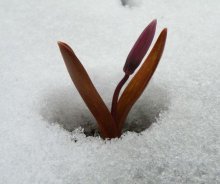
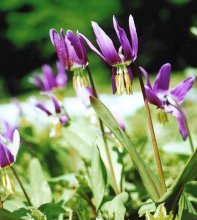

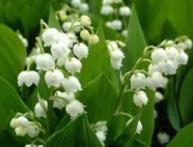
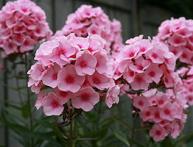

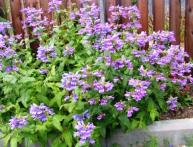
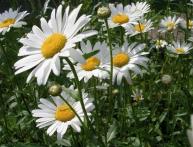
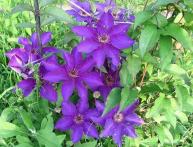
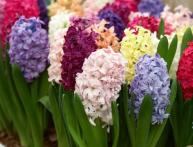
Comments
I remember tender early kandyks from childhood, but I never even suspected that they were honey plants. I would like to try this honey, but finding it seems unlikely to me.